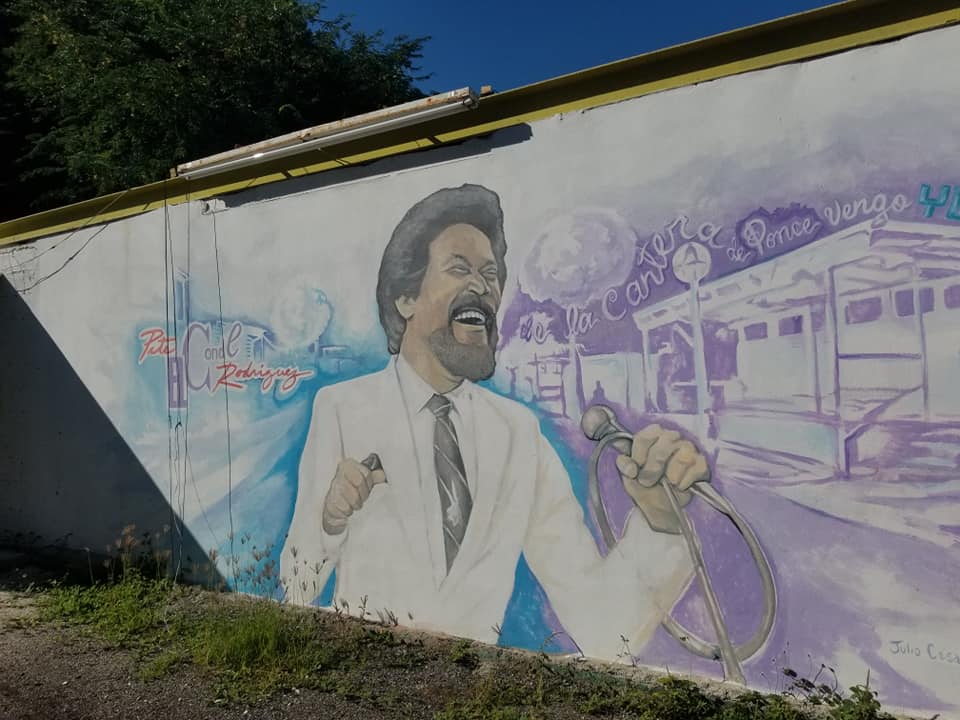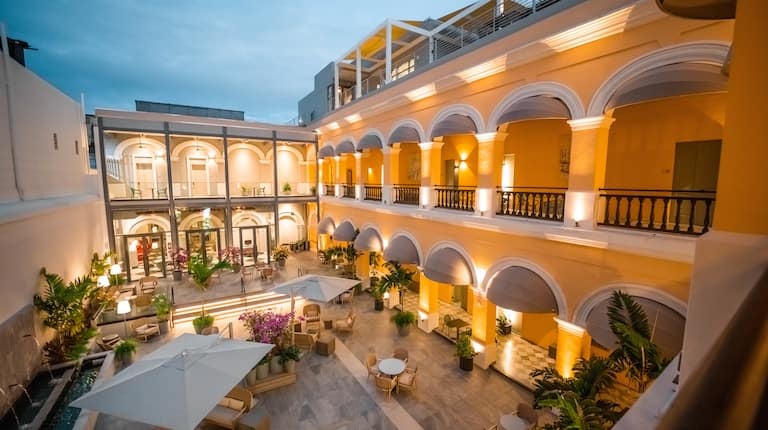
Puerto Rico is a place filled with heritage and tradition. Oftentimes, the history of anything is best told through wordage. For this iconic locale however, its narrative resonates most through the medium of art and music. Discover Puerto Rico hosted a trip aimed to highlight the area’s beauty and magnitude. Ironically, the timing of the trip coincided with the 151st anniversary of the abolishment of slavery on the island. In being able to experience the area during this time, it also unveiled the many similarities that people of color share across the world.
Dance and music are pivotal to the culture of Puerto Rico. With a unique mix of Taíno, Spanish, and African traditions, the many stories of the island can be felt by the songs as styles of bomba, plena, salsa, pop music, and other urban sounds. The creative spirit is prevalent all throughout the island, but it’s the city of Ponce that exudes that energy to perfection.
Curated by Isla Caribe, the walking tour of Ponce featured landmarks such as the distinctive fire station-turned-museum Parque De Bombas, the Plaza del Mercado de Isabel II, the Carmen Solá de Pereira de Ponce Cultural Center, the Monument to the abolition of slavery, and the Cruceta del Vigía. The city’s neighborhoods included hundreds of murals—from the vejigante to notable music figures—that give viewers a glimpse into the history of “the most Puerto Rican city.” Musicians like Angel Mercado, Héctor Lavoe, and Pedro Morales, just to name a few, were all celebrated with paintings around town, but none of which were as intriguing as that of Pedro Juan Rodríguez Ferrer, better known as Pete “El Conde.”

Ferrer was an important salsa singer from Ponce. Due to bouts of racism during his time in New York and the U.S. Army, “El Conde” became a beacon of activism both in the states, as well as in the island of Puerto Rico. Through his music, Pete raised awareness on the struggles of being a Black person, regardless of where you may be from. The impactful figures of color didn’t stop with this stylish musician, there were also two women in particular that made their marks on the framework of Ponce, and Puerto as a whole—that of Isabella la Negra and Ruth Fernandez. Buried at the Cementerio Civil de Ponce, the former became one of the biggest entrepreneurs in the area, while the latter rose to the heights of the music industry, and debunked several stereotypes in the process.
“Back In the day when Black musicians used to perform at hotels in Ponce, they had to enter through the back door of the kitchen,” says Melina Aguilar Colón, founder of Isla Caribe. “She was the person who said, ‘Hell to that, I’m going to walk in through the main entrance.’ She was also the first woman to sing in a Puerto Rican orchestra; the first Puerto Rican woman to sing music at the Metropolitan Opera House in New York City. She always broke barriers.”
Music can be considered one of the few universal languages, but here, dance is equally important. In Ponce, we learned about the influence of music and salsa on the island’s culture, but in San Juan, we experienced the movement of bomba, and how dance could lead the sound, as opposed to being the other way around in most instances.
Escuela de Bomba y Plena Cepeda, led by Tata Cepeda and her daughters, is a pivotal institution in promoting the culture of Puerto Rico. The Cepeda Family has been spreading Bomba and Plena to different parts of the world for 8 uninterrupted generations. Don Rafael Cepeda, a musician, folklorist, and composer who took our Puerto Rican Bomba to different countries and was awarded the National Endowment for the Arts Fellowship, has left the legacy of culture to his entire family, who continue to fulfill it to this day.
“Bomba is the oldest genre of music from Puerto Rico,” says Hector Garcia, instructor at Escuela de Bomba y Plena Cepeda. “It is the music tradition and dance tradition that our enslaved ancestors in Puerto Rico created and utilized as a form of resistance, as a form of communication, as a form of mourning and as a form of celebration. So Bomba was used in many different ways. That’s why when we talk about the rhythms, each rhythm has its own purpose.”
The city of Old San Juan is one of the most beautiful locations in the entire world. Known for its elegance, rich history, and vibrant culture, and festive atmosphere, this place contains an ambiance like none other, highlighted by centuries-old buildings that added to the nostalgic nature of the island. One of the establishments that should be noted is the Palacio Provincial Hotel, located right in the middle of Colonial Old San Juan within walking distance to a host of popular attractions. Situated within an historic early 19th century building, this venue Palacio was restored, providing a modern feel with hints of the structure’s colonial past.

Outside of the many lessons to be learned about Puerto Rico’s legacy, there are also many fun and exciting activities, events, and locations to be explored. Fairmont El San Juan Hotel—the retreat that housed the amazing trip—is situated on two miles of pristine oceanfront, and includes four tropical pool areas and luxury cabanas, 13 restaurants, bars, and lounges including BRAVA nightclub, Well & Being Spa, state-of-the-art tri-level Fitness Center, the newly opened Foxwoods El San Juan Casino, and The Shops at Fairmont El San Juan Hotel.
The island also features La Plaza del Mercado de Santurce – locally known as La Placita – has served as the farmer’s market of the Santurce neighborhood of San Juan. A market and meeting area by day that transitions into a party area in the evening. In just a few city blocks, you’ll find high-end restaurants and bars next to chinchorros (inexpensive bar-restaurants), craft cocktails and Medalla beer, people dancing salsa in the streets, and so much more.
History and culture is weaved throughout the fabric of Puerto Rico. From its music to its dance forms, this island is a transcendent location that everyone should experience at least once in their lives. The stories of activism within the artistic practices of their creatives draw parallels to many to the musicians, writers, and painters of color in America. Outside of the region’s immense beauty, travelers can also feel a connection to their ancestors in the old world, as well as their contemporaries abroad. The pain and struggle that many people share serves as a testament to the resilience and perseverance of the descendants of African heritage.
If you’re looking to experience the vibrant energy of Puerto Rico, visit discoverpuertorico.com.







